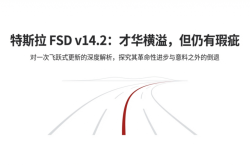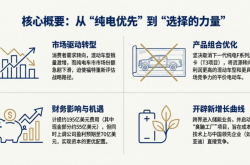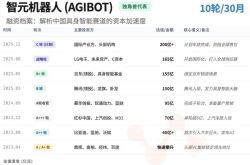Witnessing the Genuine Progress of Embodied Intelligence through WRC 2025
![]() 08/14 2025
08/14 2025
![]() 497
497
This year, humanoid robots remain the focal point, but the exhibition's emphasis has shifted from 'walking and moving' to 'working and going online'. Exhibition booths no longer showcase individual robots but simulate real business processes, multi-robot collaboration, and system integration. Many products now directly provide prices, delivery cycles, and maintenance plans.
Author|Dou Dou
Editor|Pi Ye
Produced by|Industry Expert
A few years ago, robots were commonplace at exhibitions, primarily for skill and performance displays, generating significant buzz. However, in terms of practical applications, there was still a substantial distance from large-scale deployment.
Now, this scenario is changing.
In 2025, with the maturation of hardware, cost reductions, and the implementation of key technologies like large models, robots are beginning to enter more specific scenarios. From factory workshops to rehabilitation centers, and from security inspections to retail terminals, some robot products already possess preliminary delivery capabilities and are operating in real environments. Their roles have shifted from demonstration prototypes to tools and assistants, even exhibiting certain autonomous collaboration capabilities.
The World Robot Conference offers a clear observation window.
Compared to 2024, the number of participating companies has increased this year, with exhibited products focusing more on usability and replicability. Manufacturing, healthcare, services, and other industries have emerged as key application areas. Humanoid robots continue to be center stage, but the exhibition's focus has shifted from 'walking and moving' to 'working and going online'. Exhibition booths now simulate real business processes, multi-robot collaboration, and system integration, rather than just single-robot demonstrations. Many products directly provide prices, delivery cycles, and maintenance plans.
Through this window, we discern three clear signals:
First, the technical threshold has been breached. The integration of multimodal large models and embodied intelligence has significantly enhanced robots' stability in perception, understanding, and execution.
Second, commercialization is taking shape. Reduced hardware costs and increased domestic component penetration have enabled more products to be SKU-ized and deployed in bulk.
Third, scenario traction has increased. High-frequency and controllable tasks such as manufacturing, rehabilitation, campus security, and retail have commenced bulk pilot projects and form closed-loop operations with backend systems.
If in 2024 we witnessed what robots could do, in 2025 we will truly commence discussing where and how robots can be utilized.
I. Robots Embarking on Scenarios
The most significant change presented by the World Robot Conference in 2025 is the shift in exhibition logic.
Unlike 2024, which emphasized product capabilities, this year more participating companies are answering the question of 'whether they can be used'. Booth designs have shifted from single-robot demonstrations to multi-robot collaboration, tool chain displays, and typical scenario restorations, focusing on whether products possess deployment capabilities, operational stability, and system integration.
Humanoid robots remain central, but their roles have evidently changed.
In 2024, humanoid robots were primarily demonstrated dynamically, emphasizing basic actions like bipedal walking and waving. This year, humanoid robots from companies like UBTech, Yinhe General, Fourier, and Zhiyuan were demonstrated for the first time in near-real 'work scenarios', performing tasks such as handling, picking, collaborative operations, and even completing process tasks. UBTech's Walker S2 achieved loading and unloading movements in a simulated production line environment, while Yinhe General demonstrated a complete closed-loop operation of robots replacing humans in retail store scenarios. Many models are labeled with continuous operating duration, load indicators, and training methods, and product forms are shifting from 'prototypes' to 'SKU-ized'.

Traditional industrial robot manufacturers are also adjusting their strategies, proactively moving closer to scenario integration.
Companies like Jieka, Efort, and AUBO, which originally focused on collaborative robotic arms, showcased product lines this year that are closer to the needs of flexible manufacturing, such as mobile manipulation platforms (robotic arms + chassis), quick-change modules, and reusable task packages.
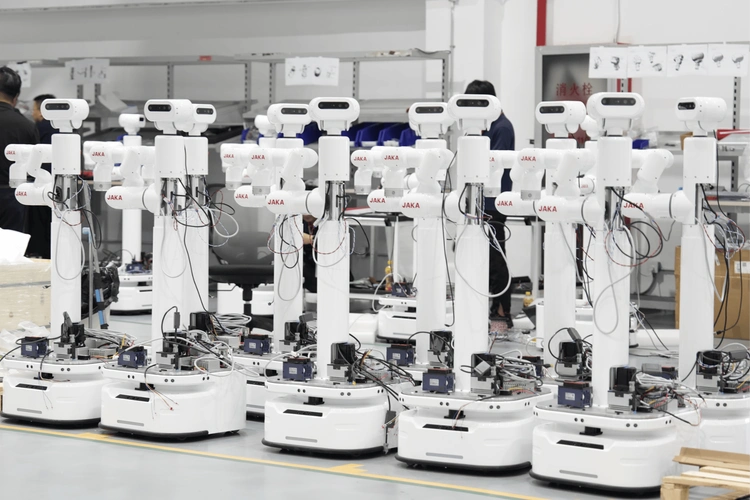
These products usually come with MES/WMS docking solutions, emphasizing the deployment cycle and the degree of openness of the tool chain, marking the transformation of traditional industrial robots towards the role of 'system integration providers'.
Changes in the service robot exhibition area reflect a greater focus after industry contraction.
In 2024, there were still numerous robots for hotel deliveries, front desk reception, exhibition traffic guidance, and some products had vague business models. This year, most companies have focused their products on high-frequency, stable, and sustainable scenarios, such as convenience retail, commercial reception, and indoor delivery. The Beijing 'Galaxy Capsule' project is a representative example. In the smart retail terminals operated in Haidian District, robots not only handle product distribution but also support collaboration with backend systems to complete restocking and settlement, forming a micro-store model with a sustainable business closed loop.
Medical and rehabilitation robots exhibit a trend towards systematization and platformization.
Star Dust Intelligence launched three immersive experiences and exhibition areas with Astribot S1. It is understood that this robot has been deployed in nursing homes in the first half of the year.
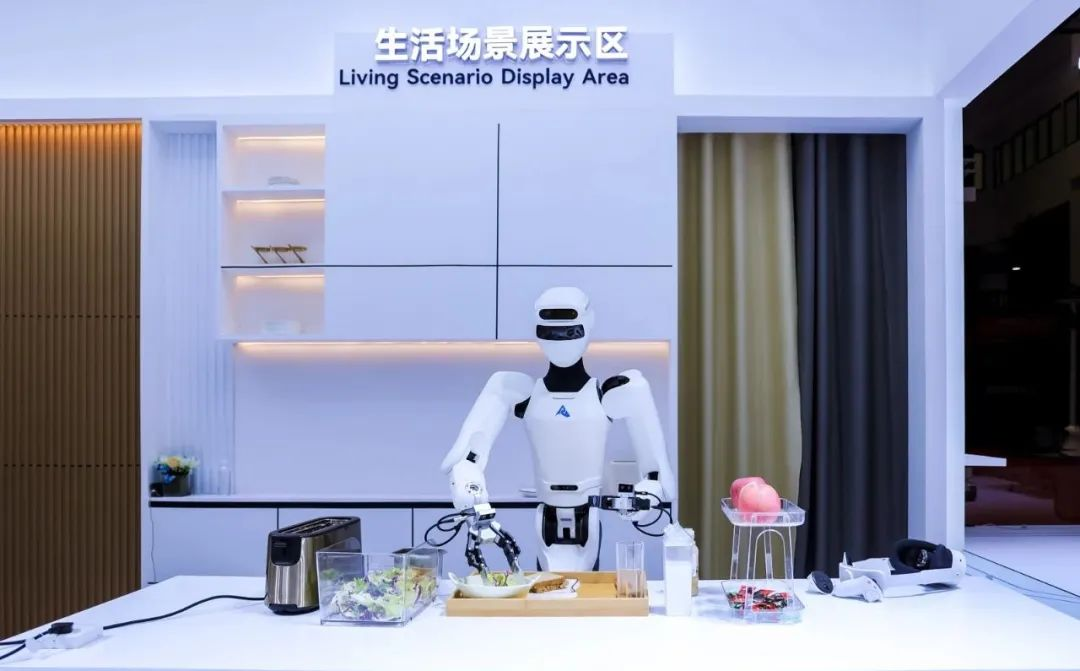
Fourier set up a rehabilitation workstation in the exhibition area, with multiple robots collaborating to support different functional training, controlled by a single therapist. This solution has been implemented in some top tertiary hospitals. Compared to the 'single machine + schematic diagram' display in 2024, this year clearly showcases the deployment structure, data feedback mechanism, and human-robot collaboration process, with a stronger emphasis on efficiency improvement and the bed output ratio enhancement target.
Running through these changes is a comprehensive enhancement in tool chain capabilities.
Many participating companies have brought their previously internal-only development platforms, simulation training systems, and remote operation and maintenance backends to the forefront, emphasizing reusable task scripts, online training, remote upgrades, and deployment management capabilities. These invisible foundational capabilities are crucial for robots to be truly implemented and were a relatively missing link in the 2024 exhibition.
Overall, the focus of the 2025 Robot Conference has shifted from being able to move to being able to use, and gradually towards being able to go online, maintain, and iterate. Companies are no longer just showcasing functions but also discussing pricing, delivery time, deployment cycles, and maintenance mechanisms. This reflects the real progress of robots moving from technology demonstrations to industrial applications, gradually approaching 'positive ROI'.
II. From 'Showcasing Skills' to 'Taking Up Positions'
The Driving Force Behind Robot Implementation
The transition of robots from being able to perform on exhibition stands to being usable in real scenarios is not an overnight technological miracle but the result of steady evolution and gradual alignment of multiple technical routes, industrial chain links, and market conditions over the past few years.
First and foremost, it is the embedding of large model capabilities and the substantial implementation of embodied intelligence.
In the past, robots often relied on rule-based programming to execute tasks, making it challenging to cope with slightly more complex environmental variables. Today, the addition of multimodal models allows robots to understand human intentions through 'seeing' and 'hearing'.
For example, at the exhibition, some humanoid robots can already receive vague semantic instructions and combine visual recognition, spatial perception, and task planning to autonomously complete grasping, handling, and even path selection. Although there is still a gap from full generalization, the path from the laboratory to prototype demonstrations and then to some pilot operations has been initially established.
Simultaneously, progress in hardware and manufacturing has addressed another layer of obstacles: cost.
A few years ago, the price of a relatively fully functional robot could be as high as millions of yuan, and many companies were even afraid to quote prices. Today, at this conference, more and more manufacturers are actively listing the prices and configuration details of their entire machines, ranging from millions to hundreds of thousands of yuan, with some lightweight platforms even entering the range of under 100,000 yuan.
This is the result of improved supply capacity across the entire industrial chain. The maturity of domestic components, lightweight modules, and integrated design has significantly improved the manufacturability and delivery capabilities of robot products.
For OEMs, this means that products can finally be defined and packaged in the form of SKUs, which also signifies that robots truly possess the prerequisites for circulation as commodities.
If technological progress and cost control have prepared the body for robots, what drives them to truly move is the clear traction from the scenario side.
In the past, the biggest challenge facing the robot industry was not the inability to make them but the inability to use them, meaning many products could not find suitable application scenarios, or even if they did, it was difficult to close the loop on commercial value. But this situation is changing, and some localized high-frequency tasks within the industry are beginning to emerge.
For instance, workstation handling and logistics sorting in manufacturing, standard training processes in rehabilitation medicine, night patrols in campus security, and product delivery in service retail. The common characteristics of these tasks are repetition, stable rhythm, and controlled space, making them suitable for robots to cut in and replace some human labor.
At the conference, the humanoid or mobile robots exhibited by many companies are no longer 'showing off their muscles' but performing these seemingly ordinary yet real details of work. They are the starting point for robots to truly move towards use value.
Greater structural support comes from the maturity of policies and ecosystems.
Compared to 2024, the implementation mechanism of 'scenario + policy + enterprise linkage' is clearer this year. Many regions have begun to promote the trial use of robots locally, no longer only focusing on technology launches or industrial layout but clearly giving task indicators, operation cycles, and support methods.
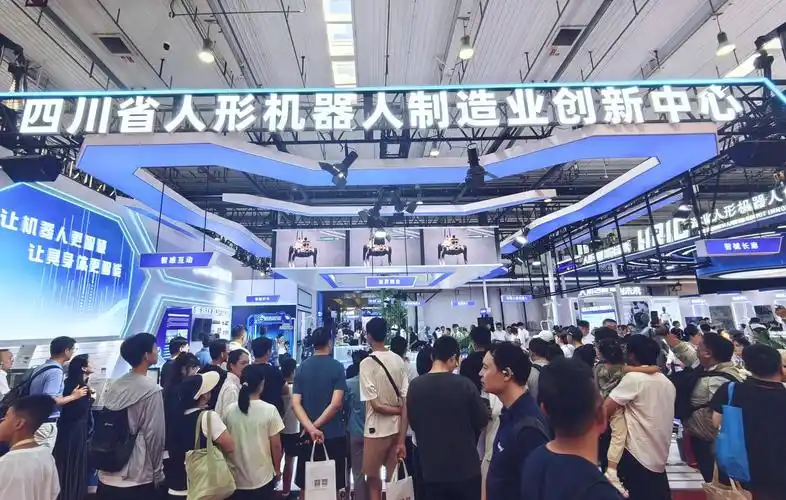
For example, some parks provide trial operation space and data access interfaces for robots, some hospitals coordinate with rehabilitation equipment for actual bed scheduling, and some cities have begun testing new models such as 'robot + convenience retail' or 'robot + smart travel'. This means that the threshold for commercialization verification is being lowered, and the path to growth is becoming predictable.
Looking back at this series of changes, it can be said that the robot industry is hitting the right rhythm from multiple directions simultaneously. None of these steps are decisive breakthroughs, but all variables have aligned this year, making it possible for robots to move from demonstrations to use.
III. Easy to Enter, Hard to Stay:
The Next Hurdle for Robot Implementation
Although the 2025 Robot Conference offers hope for implementation, the real challenges have only just begun. In the coming years, the development of the industry will primarily unfold along two directions: one is the depth and breadth of scenario penetration, and the other is the maturity of business models and operating systems.
In terms of scenario penetration, robots will move from single-machine operations to system collaboration.
Among them, the manufacturing and logistics industries may lead in completing this transformation. In future factories, humanoid robots and mobile manipulation platforms will seamlessly collaborate with robotic arms and automatic conveyor lines to complete cross-station and cross-regional material flow and flexible work section operations. Robot fleets in logistics parks will achieve automatic scheduling and full-process unmanned operations from sorting to loading and unloading.
In the service sector, the deployment density of robots in high-frequency scenarios such as retail, catering, and security will continue to increase, expanding from isolated pilot sites to organized and scheduled operation networks. By then, robots in cities may become part of the infrastructure, just like today's parcel lockers.
The evolution of business models is synchronized with this. The proportion of one-time equipment sales will decrease, and Robotics as a Service (RaaS) will become the mainstream.
That is, customers pay fees on a monthly or annual basis to obtain a complete service package including equipment, maintenance, upgrades, insurance, etc. Manufacturers monitor equipment status, push task updates, and optimize performance through remote operation and maintenance platforms.
This model not only minimizes the initial investment for customers but also enables manufacturers to continually amass operational data over the long term, fostering a reciprocal loop between technology and business. As operational data accumulates, robot operators may achieve economies of scale and technological barriers akin to today's cloud computing service providers.
However, an optimistic outlook does not diminish the challenges faced.
Reliability stands as the first challenge. Many robots excel in exhibition and pilot settings but may encounter perception deviations or unstable movements due to environmental factors such as lighting, dust, and temperature variations in real-world scenarios over time. The stability of key technologies, including dexterous hands and force control modules, must be enhanced for precise operations on flexible objects and complex surfaces.
Energy efficiency also poses a limiting factor, particularly in large mobile platforms and humanoid robots, where the balance between computational power demands and battery life remains unresolved.
The second challenge is the cost of system integration. Despite the decline in hardware prices, seamlessly integrating robots with existing informatization systems like WMS, MES, and security platforms necessitates high customization investments, significantly impacting deployment speed and scalability. Many companies discover that the robot introduction cycle is over twice as long as anticipated, leading to project stagnation after pilot phases.
It is foreseeable that the next three to five years will be a pivotal period for the robot industry. On one hand, the concurrent maturation of technology, cost, scenarios, and policies presents a historic opportunity for large-scale deployment. On the other hand, the challenges of stability, integration, and social adaptability indicate that this process will not be without obstacles.
From the current perspective, those who can accumulate real-world operational experience and establish replicable implementation pathways will gain a competitive edge in the next round.

